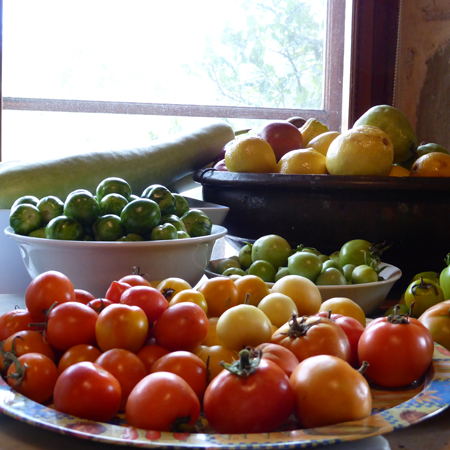The perfect vegies for a small space

After last month’s column on the basics of setting up a patch from scratch, this month we focus on what to grow when space is limited. Many new gardeners struggle with deciding what to grow and a poor choice can mean their one square metre garden is entirely covered by an overzealous zucchini, supplying the whole neighbourhood with mammoth zucchinis, which they don’t even really like. While there is no definitive answer as we are all individuals, there are certainly some common questions to ask yourself that will make this choice simpler. Combine these answers and you will have great success and love the process.
What you like to eat – there is no excuse for not eating it if you grew it
I have an intense dislike of parsnip, so much so, that my kids have never eaten it. Now they are choosing what to plant in their own veggie beds, they want to give it a go – I had to buy some parsnip seeds to keep them happy. (Be assured that I will not be eating any myself!)
Choose compact plants or plants that are good value in small spaces
Climbing plants are a great example of using space efficiently. Choose from varieties of climbing peas and beans, tomatoes, cucumbers, climbing spinach (also known as Ceylon or Malabar spinach) and even the small ‘Golden Nugget’ pumpkins. Repeat harvest, ‘cut and come again’ varieties such as loose leaf lettuces and sprouting broccoli are also great value. Springs onions and chives are highly productive and versatile as they can be used as onion substitute in many dishes and don’t take up too much space. When choosing vegetables don’t be fooled into buying a punnet of 6 seedlings when you only really need one, as the six plants will take up too much space, produces more than you can handle and end up being poor economy compared with buying a larger single seedling.
Herbs for garnish which you regularly use
Buying a whole packet of fresh basil, coriander or parsley is a waste for most people as they use only part of the packet and then throw the rest away. Better to grow it and harvest what you need, when you need it.
Veggies that have a high relative cost
Growing easy things like salad bowl lettuces and mesculin mixes allows you to pick the quantities you need for a salad when you need it, rather than buy a bag of mixed leaves which lack freshness and again, most of the bag goes to waste. Asian vegetables are also the same. Harvest the amount of bok choy you need rather than buy a bundle and using only part.
Varieties that are have high chemical inputs
For example, if you are buying garlic that comes from overseas, the white cloves have been bleached, treated with fumigants and possibly fed with unhygienic inputs. This can’t be good for you. Better to grow your own and share it around with family and friends.
Finally from a gardener who likes things to look nice as well as taste great, choose colourful varieties of vegetables as not only do they look great, the colours indicate a variety of nutrients that provide essential health benefits
It is great to try and eat our recommended five servings of vegies a day using the five main vegie colour groups, ensuring we get the most phytonutrients from our food. Green leafy green vegetables include spinach, silver beet, broccoli, celery and cabbage; blue and purple vegies include cabbages, kales and purple broccoli; red vegies includes tomatoes, capsicums and beetroot; orange and yellow vegies include pumpkin, carrots and sweet potato; and white includes potatoes, onions, leeks and garlic.
Tell us today, do you have your own vegie garden? What do you like to grow? Will you start a new garden with these tips?









 Proudly Australian owned and operated
Proudly Australian owned and operated